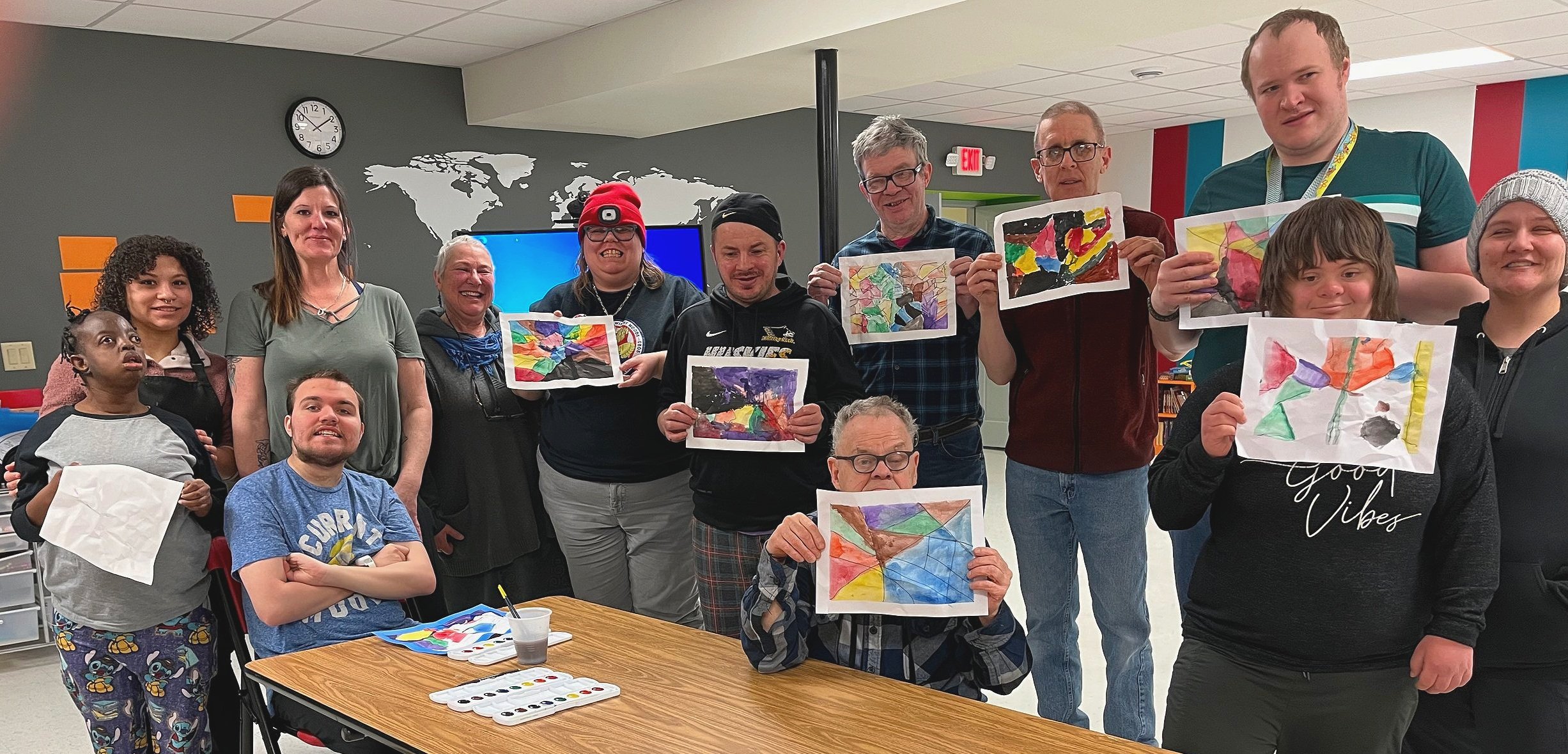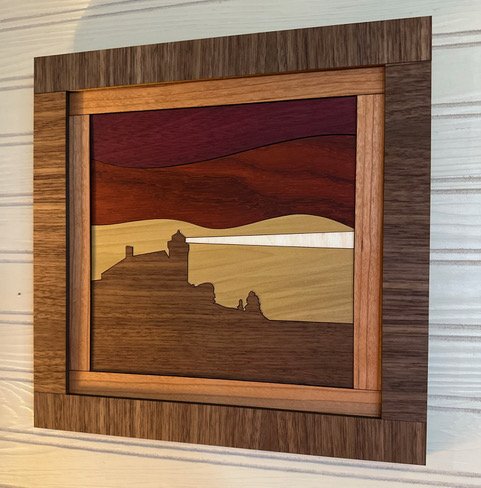Capturing the Lights
The Source—Canon 7D Mark II; 17 mm; ISO 1000; f/2.8; 13 sec. Courtesy of Tom Oliver.
Friday morning, March 24, I woke up and ate breakfast, then got on Facebook to see what was happening, and there were a zillion photos of the amazing night sky from Thursday, lit up in a spectacular display of Northern Lights. The photos were fantastic, but a group of them had come in from a new friend, Tom Oliver, that I thought were particularly cool. So, I made an appointment to talk with him.
I wanted to know what Tom does to get ready for taking northern lights photos and how I might be able to set up my camera to do that. Many times when I try to take night photos, using the automatic settings on my camera, my camera will often say “not enough light” and refuse to shoot. It turns out that for night photography, Tom says that I should use manual mode on my camera and to pay particular attention to three specific settings: aperture, shutter speed, and ISO. The reason these three settings are important is that they control how much light is gathered by the camera, which can be a challenge for night photography. The aperture is the opening in the lens through which light passes—a larger opening lets in more light. The shutter opens and closes to let light passing through the aperture hit the sensor in the camera—the longer the shutter is open, the more light hits the sensor. ISO is a camera setting that will brighten or darken a photo—the higher the ISO, the brighter the photo. Each of these settings have trade-offs, which can affect a picture in other ways. So there is a balance that needs to be kept between them to have well exposed pictures.
Eagle Harbor Southward—Canon 7D Mark II; 17 mm; ISO 1000; f/2.8; 15 sec. Courtesy of Tom Oliver.
When I asked what type of camera he uses, he told me he has a Canon 7D, Mark II, a camera which can use a variety of lenses. However, he emphasized that any camera which can allow the user to adjust those three settings will work for taking nighttime pictures. He even pointed out that he’s seen some pretty good Northern Lights photos taken with cell phones.
“I’m a fan of people just doing what they enjoy,” he said. “I think people feel like there are all these ‘rules’ with photography, and you need to have all this expensive equipment and gear. That’s not the case. Creating images with what you have, if you’re having fun with it, is great….but if you reach a place where you want to see what different gear will do, then there’s the opportunity to invest a little more.”
Hexagenia Silhouette—Canon 7D Mark II; 400 mm; ISO 100; f/5.6; 1/4000 sec. Courtesy of Tom Oliver.
I asked Tom to describe for me how he sets up his camera for his photography. He told me that it depends on what he is trying to photograph. He said that he enjoys photographing a wide variety of subjects, primarily wildlife but also the night sky, macro subjects (close-ups of small things), and travel photos—each requires a different skill set with a camera. Furthermore, he told me that night sky photography requires more planning and set-up in advance than other types of photography. He will scout out locations for interesting shots during the day and then when conditions look like they might be good, he sets up his camera settings in advance, so it is ready to go. Tom told me that he uses a wide angle lens to capture more of the scene in front of him. He sets up the camera using a tripod, so he can have a very slow shutter speed. He said that he starts with the shutter being open for about 15 seconds and then adjusts his settings based on the resulting picture and what he wants to create.
I know that some people wonder if night photographs look like what photographers actually see in the sky.
Tom said, “No. Because eyes and cameras are completely different systems—the parts of our retina that detect color do not function well in low light, but a camera sensor does not have that limitation.”
Many nights when he photographs the aurora, he said, all he sees with his eyes is some light haze against the dark sky. Another important factor for any night photography is human night vision. Bright white light will ruin night vision for up to 30 minutes—so Tom uses a red-colored light (which does not impact night vision) and he tries to dim every light on his camera. By doing that, he says it keeps his vision as good as possible, but that it also prevents him from affecting the vision of other photographers out chasing the aurora.
Sudden Fortune—Canon 7D Mark II; 17 mm; ISO 1000; f/2.8; 15 sec. Courtesy of Tom Oliver.
On the night of March 23, Tom chose to go to Eagle Harbor to catch the Northern Lights. That night, the Aurora was so strong, he was, at times, taking pictures of the cascading colors while facing south instead of north. At one point, he decided, since very few other photographers were at that location and he could see that he would not get in anyone's way, to go close to the lighthouse to check out some different angles, and was ready to pack up and go home when suddenly a burst of solar energy just exploded. He looked up to see where the lights were coming from and the angle he had made it look like the core of the energy was right above the top of the lighthouse. So he quickly arranged the tripod and aimed the camera straight up the wall of the lighthouse, and the picture looked like the lights were coming from the top of the structure. With all the preparation, Tom was able to seize the opportunity for a great shot when it presented itself.
Tom's greater interest in photography, though, is wildlife. He explained that he’s always had a deep interest in wildlife ecology, and that is what led him to start taking pictures. Interestingly, the photography skills for wildlife photography, he said, are almost the exact opposite of those for night sky photography. Rather than having the camera completely set-up in advance, he often needs to be able to change his aperture, shutter speed, and ISO settings quickly. Wildlife are also not predictably found in a given location like a lighthouse; so, rather than thoughtfully composing a picture in advance, he needs to be more spontaneous and flexible in the locations to which he goes to shoot.
“The most important thing about wildlife photography besides understanding and being able to predict the animal’s behavior,” Tom said, “is knowing your camera really well so you can change settings on the spur of the moment, as needed.”
Abstract Wilderness Icon—Canon 7D Mark II; 400 mm; ISO 1600; f/5.6; 1/40 sec. Courtesy of Tom Oliver.
He also takes the welfare of the animals very seriously, specifically not getting too close or disturbing them too much. So, he frequently uses a super-telephoto zoom lens. For me, I enjoy photographing wildlife—but I’m a photographer who will jump out of the car if I see something, or find an interesting critter walking a local trail. My complete camera set-up weighs about 3 pounds with the longest lens I have (a 70-300 mm zoom). But Tom uses a Sigma 60-600 mm zoom lens that, without the camera, weighs over 5 pounds—and that also doesn’t include the other gear he will carry with him to get a nice wildlife shot.
Tom recommended that there are some great, regularly scheduled night sky photography workshops in the area, including Northern Lights Photography Workshops at the Keweenaw Mountain Lodge—for more information please call (906-289-4403 ext. 4) or email outdoor-activities@keweenawresort.com.
April 15-22 is International Dark Sky Week, and the 2023 Upper Peninsula Dark Sky Festival will take place at the Lodge on April 21 & 22. Tickets are sold out at this time, but you can get on a waiting list or get more information at keweenawdarksky.com.
Tom Oliver has worked for years as a wildlife ecologist and high school biology teacher. He is now the new Director of MTU’s Center for Science and Environmental Outreach. You can find him on Instagram (@theupwell) and check out more of his photography on his website (teoliver.com).






